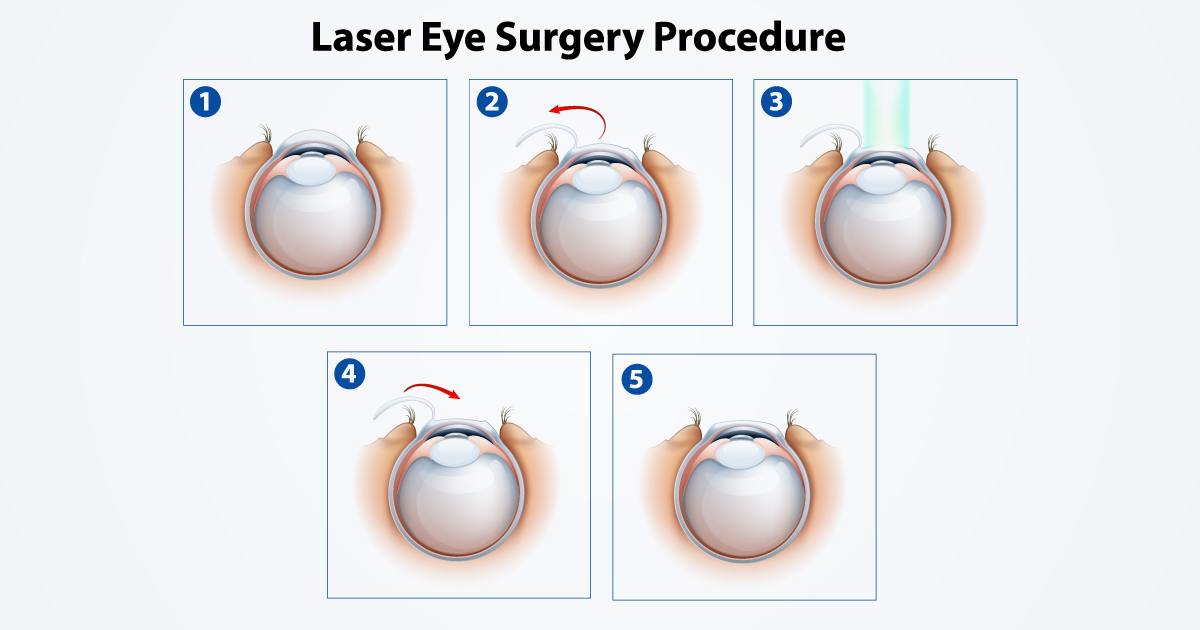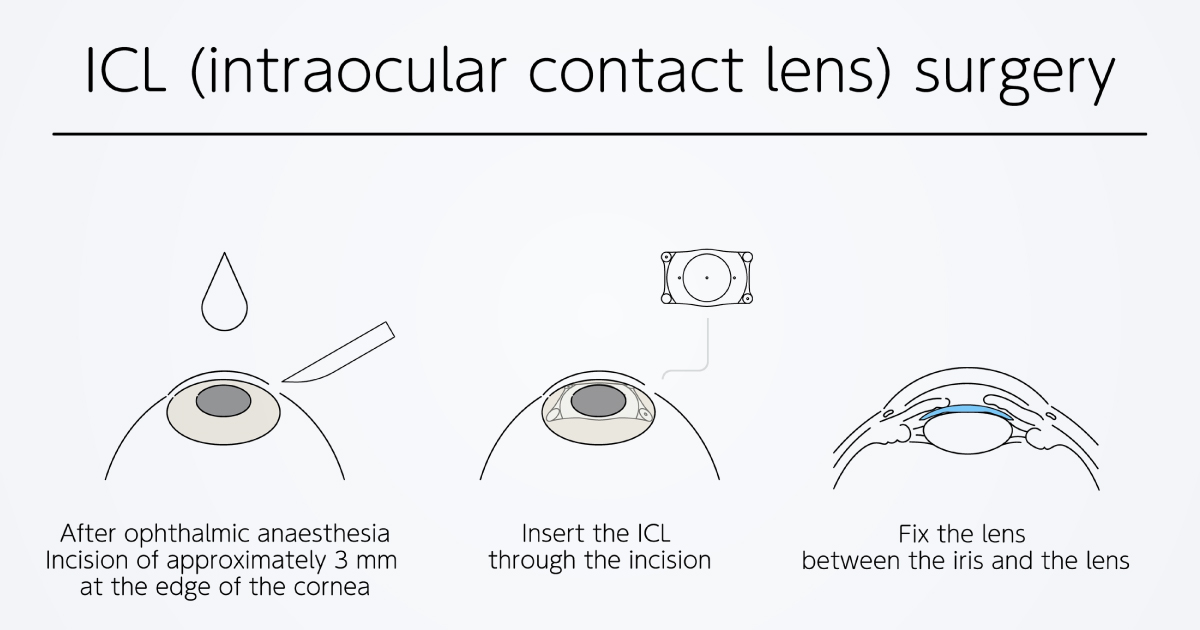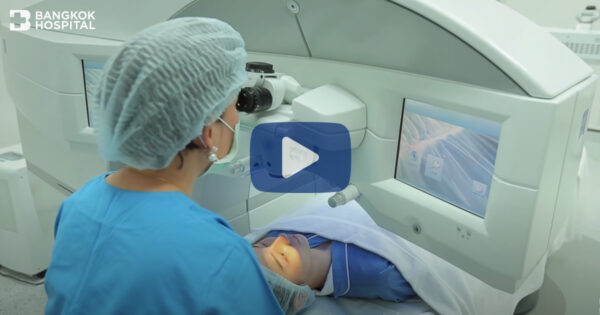LASIK is a highly popular vision correction technology today. However, to choose the right type of LASIK for your vision problems, you should consult a specialized ophthalmologist with accurate knowledge because the advantages and disadvantages of each type of LASIK vary.
What is LASIK
LASIK (Laser-Assisted In Situ Keratomileusis) is the use of laser technology to permanently correct vision problems, including nearsightedness, farsightedness by birth, astigmatism, and age-related farsightedness. There are various methods to choose from depending on the characteristics of your vision, eye condition, other associated diseases, and age. The key is to choose the right type of LASIK for your eyes.
What vision problems can LASIK correct?
LASIK can correct the following vision problems:
- Nearsightedness (Myopia): Due to an excessively curved cornea or an elongated eyeball, causing light to focus before reaching the retina, resulting in clear vision of nearby objects but blurred vision of distant objects.
- Farsightedness by birth (Hyperopia): Due to a flat cornea or a short eyeball, causing light to focus beyond the retina, resulting in blurred vision of both near and distant objects.
- Astigmatism: Due to a non-spherical cornea, causing light in different planes to focus at different points, often occurring alongside nearsightedness or farsightedness by birth, resulting in double vision.
- Age-related farsightedness (Presbyopia): Due to the deterioration of eye muscles as age increases, starting from 40 onwards, causing poor near vision. As age increases, farsightedness also increases.
What are the types of LASIK technology?
There are 6 types of LASIK technology for correcting vision problems, each with different procedures:
1) PRK (Photorefractive Keratectomy)This involves correcting vision problems using Excimer Laser technology that directly adjusts the corneal surface without separating corneal layers. After adjusting the curvature, a contact lens is placed over the corneal wound to wait for the top layer to heal. The procedure takes about 20-30 minutes and requires a recovery period of about 3-5 days.
- Advantages:
- Suitable for those with nearsightedness, astigmatism, and farsightedness by birth.
- No need for a corneal flap.
- Can play sports or engage in contact activities.
- Limitations:
- Slow healing, possible scarring, and requiring steroid eye drops for about 1-3 months.
- If not properly cared for, there is a risk of infection in the corneal surface.
- After surgery, there may be a stinging or irritating sensation in the eyes for about 3-4 days.

2) LASIK (Laser In-Situ Keratomileusis)
LASIK involves correcting vision problems with a blade to create a corneal flap before using Excimer Laser technology to adjust the vision. The flap is then closed. The procedure takes about 30 minutes and requires a recovery period of about 1 day.
- Advantages:
- Suitable for those with nearsightedness, astigmatism, and farsightedness by birth.
- Little post-operative eye irritation.
- Quick clear vision recovery.
- Limitations:
- The accuracy of the corneal flap thickness separated by the blade is inconsistent, not suitable for those with thin corneas.
- The corneal surface may get scratched, and the flap may have wrinkles.
- The corneal flap separation may have deviations.
3) FemtoLASIK
FemtoLASIK is a bladeless LASIK procedure using laser technology in all steps. The Femtosecond Laser is used to create a corneal flap before using Excimer Laser to adjust vision and close the flap. The procedure takes about 30 minutes and requires a recovery period of about 1 day.
- Advantages:
- Suitable for those with nearsightedness, astigmatism, and farsightedness by birth.
- Quick corneal healing and reduced risk of corneal surface scratches.
- Reduces deviations of the corneal flap separated by a blade.
- Limitations:
- During the first month, refrain from rubbing the eyes or engaging in impact activities, as the corneal flap may wrinkle.
4) FemtoLASIK PRESBYOND
FemtoLASIK PRESBYOND is a bladeless LASIK procedure using laser technology for all steps, specifically for correcting age-related farsightedness. Using Femtosecond Laser to create a corneal flap before using Excimer Laser with the PRESBYOND program to adjust near vision and closing the flap. The procedure takes about 30 minutes and requires a recovery period of about 1 day.
- Advantages:
- Suitable for those with nearsightedness, astigmatism, farsightedness by birth, and age-related farsightedness.
- Clear vision for near, intermediate, and distance without needing glasses.
- Quick corneal healing.
- Limitations:
- The near vision efficiency lasts 7-8 years, depending on the individual’s muscle strength.
- Since the procedure adjusts the corneal curvature for both near and far vision, distant vision might not be the clearest. A lens test will be conducted during the eye evaluation to determine the clarity level.
- During the first month, refrain from rubbing the eyes or engaging in impact activities, as the corneal flap may wrinkle.
5) ReLEx SMILE
ReLEx SMILE is a bladeless LASIK procedure with a small incision, using Femtosecond Laser technology to create a corneal flap and adjust the corneal curvature in one step. Then, the excess corneal tissue is removed through a small channel, modifying the corneal curvature without creating a corneal flap. The incision is smaller than other LASIK methods, requiring about 20 minutes and a recovery period of about 1 day.
- Advantages:
- Suitable for those with nearsightedness and astigmatism.
- Quick healing, minimal irritation.
- Strong cornea, less dry eye.
- No corneal flap issues like movement or wrinkles.
- Reduces problems with vision in low light conditions.
- Reduces the chance of post-surgery vision regression.
- Limitations:
- Cannot correct farsightedness.
- During the first week, vision might be slightly foggy, but it will improve in 1-2 weeks.

6) ICL (Implantable Collamer Lens)
ICL (Implantable Collamer Lens) is a supplementary lens technology for those with significant vision problems, thin corneas, and dry eyes, who do not want thinner or drier corneas from LASIK. A small incision of about 3 mm is made at the side of the cornea to insert a flexible collamer lens material behind the iris and in front of the natural lens. The procedure takes about 20-30 minutes and requires a recovery period of about 1 day.
- Advantages:
- Suitable for those with nearsightedness, astigmatism, and farsightedness by birth.
- Does not damage corneal tissue or thin the cornea.
- Does not cause dry or inflamed eyes.
- Clear vision with reduced light scattering.
- The lens can be removed if desired.
- Limitations:
- During the first month, slight reflections of the lens edges may be visible sometimes, but these will disappear in 2-3 months.
- Avoid water contact in the eyes for 2 weeks.
- Avoid high-impact sports like boxing and taekwondo.
How to prepare before LASIK
Preparation before LASIK: Refrain from wearing contact lenses before surgery. On the day of surgery, wash your face, shampoo your hair, and avoid makeup. Choose button-up clothing for easy changing on the day. Avoid using perfumes or any kind of deodorant. Refrain from consuming alcohol. Inform your ophthalmologist about any regular medications to check if you need to stop taking them. Do not drive on the day of surgery; it is advisable to have a companion for convenience and safety.
What to avoid after LASIK
Post-LASIK restrictions: Do not rub your eyes, wash your face, or allow water to get into your eyes. If your eyes itch, wash your hands thoroughly and gently touch the corner of your eyes. Avoid swimming, diving, and makeup around the eyes. It is crucial to use prescribed eye drops and wear eye shields while sleeping for 1 week to prevent unconscious eye rubbing. Rest your eyes periodically during visual activities.
What prescription is too high for LASIK?
A common question about LASIK is what prescription is too high for the procedure. Ophthalmologists recommend that those with a prescription exceeding 1,400 should not undergo LASIK. It is advisable to have a thorough eye examination and consult an ophthalmologist about the various types of LASIK, as some vision problems might restrict LASIK eligibility, such as excessively thin or thick corneas.
Which hospital is best for LASIK?
The LASIK Center at Bangkok Hospital is equipped with modern LASIK tools and technology. Our specialized and experienced ophthalmologists ensure complete confidence in resolving vision abnormalities, whether nearsightedness, astigmatism, farsightedness, or congenital farsightedness. Our knowledgeable and skilled staff are ready to provide attentive advice and consultation to relieve any concerns when undergoing LASIK at Bangkok Hospital.
Specialized doctors in LASIK
Dr. Thidanan Rattanatam, an expert in cornea and refractive surgery at Bangkok Hospital, received the ICL 1,000 cases award in 2024.
You can click here to make an appointment.
LASIK packages
LASIK package prices start at 62,000 baht.
View additional cataract surgery packages. Click









